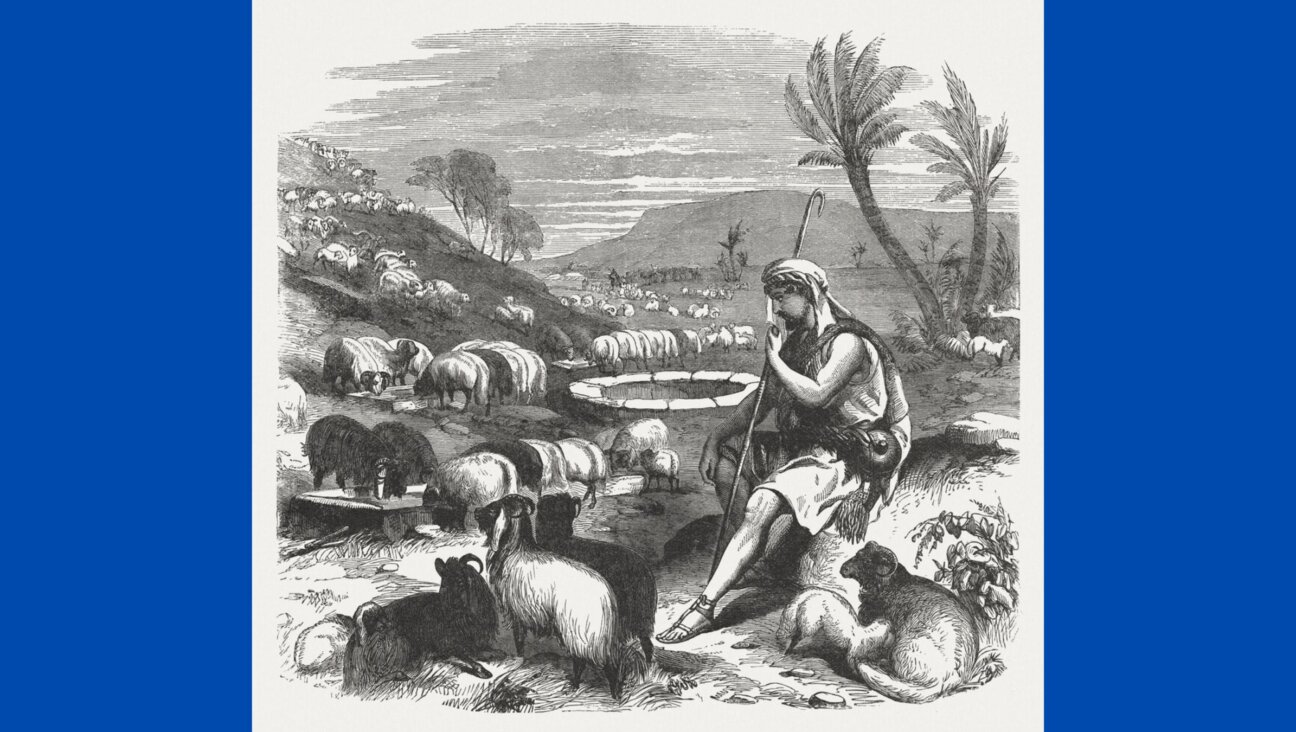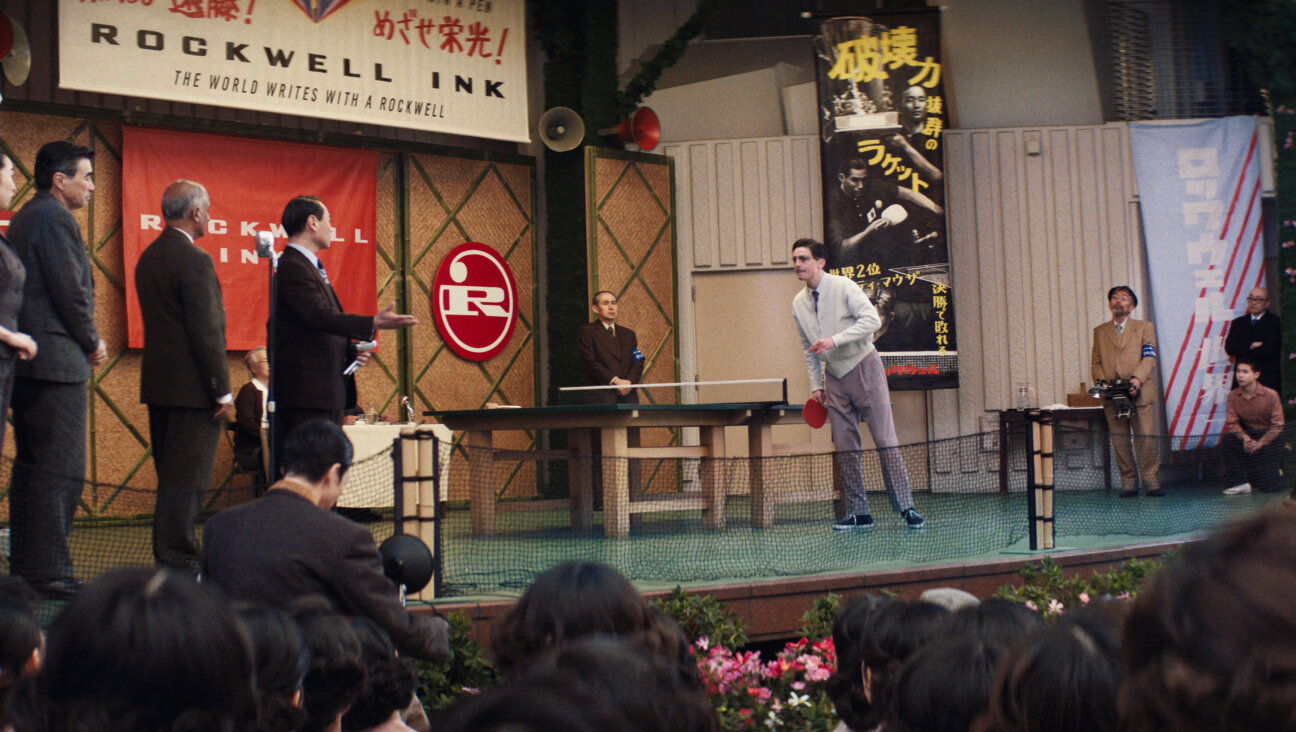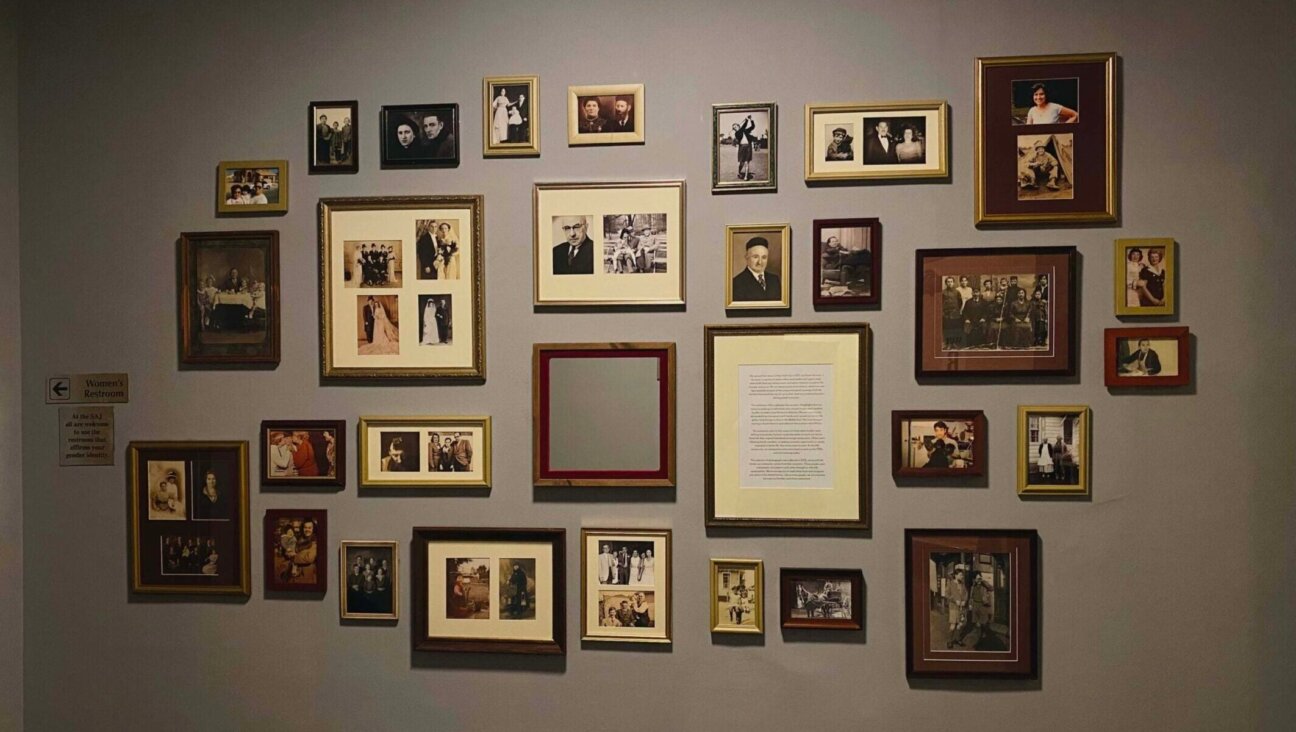Almost 900 pages about Philip Roth — and yet the crucial part goes missing

Philip Roth By Getty Images
Philip Roth, The Biography
By Blake Bailey
Norton, 896 pages $40
Philip Roth. Love him or hate him. Me? I loved him. As is the case for many Jewish American novelists, his work informed mine in countless ways. Also, I worked in the twilight of the New York publishing era Roth came up in. Though I do not seem to be among my own generation of women writers who corresponded with him — some sitting vigil at his deathbed, washing the heirless author clean — I did have the thrill of meeting the author at several publishing events in Manhattan.
Let me rephrase: I met the man who Blake Bailey refers to as having been “The Greatest Living American Writer.” I hadn’t realized it at the time because Toni Morrison was very much alive then. In the fight over what constitutes a canon, and the notion that there is no canon at all, who gets to make such claims? Blake Bailey does, in “Philip Roth, The Biography” (emphasis on the The) in which he trims the fat, muscle and tough gristle of Roth’s legacy, pounding it to tender.
Upholding the idea that Roth is The Greatest, is just one of the many decisions that informs this biography, which clocks in at over eight hundred pages, and consumed me for seven days, enraging me for a good portion of those hours. It is evident from the start that Roth is puppeteer, a la his own Micky Sabbath, using Bailey to settle scores with two “evil” wives, many publishers, editors and reviewers, and more (predominantly male) writers than seems worth recounting.
Of course the Greatest Living Author must write books, and so Roth did, but a Roth publication chronicled here goes like this: an advance is negotiated (the sum is either embarrassingly large for Roth or insultingly diminutive), the author is incensed over some form of publicity, marketing or cover art, the book is then published, swathed in prizes like an athlete heavy with medals (except that bloody elusive Nobel) and thus reviewed positively or negatively by his sometimes friends (Bellow, Kazin) rivals (Updike) enemies (Lehmann-Haupt, Kakutani) in The New York Times, The New York Review of Books and The New Yorker. Often, a lacking film adaptation caps off the project and some urban myth —that Roth bagged Nicole Kidman, say — is upheld or dispelled, depending on desired effect of tenderness.
Somewhere, though, somehow, the book has been written. In “Philip Roth The Biography,” we unfortunately don’t get much of that. But when we do return, thirstily, to Roth’s process, we get what is most essential and beautiful even, about how the matzah balls in the Roth factory get made. First drafts are terrible, he says. He discusses his delight in initial readers and how they describe his own work to him. Even better it comes from the source material itself. Bailey quotes from “The Facts”: “The most cunning form of disguise is to wear a mask that bears the image of one’s own face.”
That is the thing: Roth always will say it better than most anyone else can, and yet, there is very little in this biography that examines the actual work. Who is this book meant for but not a reader who has actually read Roth? Instead we get the news of the publication of “Portnoy’s Complaint” and Roth’s rise to uneasy fame. (No matter where he goes, everyone wants to serve him liver! Even in the UK!) And almost 30 years and 14 books after the publication of “Portnoy,” the brilliant “American Pastoral,” that first of Roth’s heart-stopping (my words) American trilogy, which marks the “American Master” (Bailey’s’ words) section, a novel that broadened his work from the satire and self-referentiality of his earlier work, is wedged in a few slight pages in between his railing at his second wife, the actor, Claire Bloom, and railing at her again.
We learn that Roth was outraged by the “American Pastoral” marketing letter to booksellers that claimed the book was an “ode to decency and middle-class convention,” (“why read it?” Roth asked his biographer) and so wrote his own assuring booksellers that the author was at a “high point of an already illustrious career.” We get some quotations from reviewers: Louis Menand wrote in the New Yorker that what the protagonist, the Swede, was “blindsided by is the culture of liberal permissiveness…” and that only Roth’s old “nemesis” Norman Podhoretz can “applaud” the “born-again Philip Roth…” which, given the source, had to have been rough praise for Roth indeed.
But of the six sections that comprise this biography only the last two delineate the stages of Roth’s writing. It begins with the beatific middle-class sheltered childhood in the Weequahic neighborhood of Newark and then the sojourn to Bucknell where, for the first time he is surrounded by The Goyim. It is here beneath the umbrella of Eisenhower’s America, when Roth leaves his mother Bess’ protective embrace and where men outnumber women four to one, that he begins another enduring methodology: the humiliation of women. Roth writes a satirical zine (referring to himself with his first of alter egos, “Swiftberg”), parodying the aww shucks school spirited voice of the school paper, edited by the captain of the cheerleading squad who to this day remains dazed over the author’s treatment. But a female professor, Mildred Martin, a feminist, vouched for him until her death, so really, it was all copacetic.
Oh, the take down of women. Here is the deal with women: Roth wants to bed them — he may or may not be a “nymphomaniac” — and once he does, their stories are eaten by his next project. The pattern begins in earnest when Roth’s sexually precocious girlfriend, Maxine Grofsky , whom he met when both worked as camp counselors at a New Jersey YMHA and who went on the be the Paris editor of the Paris Review and a well-known literary agent, is transformed into Brenda Patimkin in his debut fiction, “Goodbye, Columbus”; it cycles through his “evil” first wife, Maggie, whose actual death in a bloody car wreck Roth rejoiced, becomes Libby in “Letting Go” and Lucy in “When She Was Good.”
Then Inga, with whom Roth had a multi-year affair while married to his second wife, becomes Drenka in “Sabbath’s Theater” and the damaged lover of crows pseudonymed Sylvia here (whose claims of abuse at the hands of many are summarily, disturbingly dismissed by Bailey) becomes Faunia in “The Human Stain.” And of course, Claire Bloom becomes Eve in “I Married A Communist,” a direct response to her memoir, “Leaving A Doll’s House,” which exposes her account of their marriage to the world. Roth reels from it and attempts to undo her version of events (and so many other wrongs — one of the last records of his writing is an open letter to Wikipedia disputing his page on the site) until his death in May of 2018.
The search for a biographer, which begins when Roth realizes he has a legacy that must be captured and pinned under glass, is also chronicled. We learn that there were several writers in the running including Ross Miller, Arthur Miller’s nephew and longtime friend-and-confidante-turned-nemesis of Roth; Judith Thurman, once lover, benevolent friend and dedicated reader; and, behind square number three, literary biographer, Blake Bailey. On the surface it is a baffling choice. Bailey is a gentile from Oklahoma who experienced next to nothing of Roth’s early world. He has, however, written acclaimed biographies of John Cheever and Richard Yates, and one wonders if Roth was not attempting to nudge his way in to that space saved for the powerful WASPS that crowd the questionable history of American letters.
While Bailey’s prose is captivating, his guided research broad and thorough, his ability to package a lifetime into a neat box uncanny, he recounts the Jews of Newark that comprised Roth’s entire young life at a vast narrative distance. Roth doesn’t feel formed until college, when he moves away from insular Weequahic and into the heady universe of Henry James, Gustave Flaubert, and college coeds who miraculously perform fellatio to the delight, confusion and dismay of our young hero.
So where do the author and his chosen preservationist part company? I hope someone will write a dissertation on inconsistency of perspective in this text. Sometimes Bailey is in the footnotes. (For example, he refers to Maggie’s diaries as “a pretty insipid piece of writing,” on page 253 and then, in the last pages, he quotes directly from them: “..I have no conscience…I have no moral repugnance..” she writes. These words do not seem insipid, but placed here they seal Roth’s rendering of her.) But Bailey appears throughout making himself known to the reader in random comments like the, “gallingly different direction” the magazine Commentary took under Norman Podhoretz (agreed…) or that “Roth was far from alone in regarding Gore Vidal as anti-Semitic.”
Whatever the perspective, all moral and ethical questions surrounding Roth (not his work) are put to rest. An incident of possible assault on Claire Bloom’s daughter’s friend? Nope, didn’t happen. Bloom’s allegation that Roth left her no money? The claim “quietly passes over such incidental munificence as…” That Roth really really wanted the Nobel? Don’t be silly! This biography asks us to care about such things and delivers a not guilty verdict, each time.
There is no comment on the way women provide material and how Roth pays them off in apartments, monthly stipends, happy stints in rehab, paid medical expenses. No comment on the deans that filled Roth’s classrooms with luscious female students. Or the time of men that Roth inhabited, and how the writer was given chance after chance to have his work meet his potential. And when that happened there is also no comment on the way that Roth called in favors for friends and lovers at the Guggenheim and MacArthur foundations, countless magazines, publishing houses and so on.
Context is not of interest at all and Roth, that beautiful specimen, sadly, is now pinned under shattered glass. Even Roth’s magnanimous bequest of his books and papers to the Newark Library is suspect. Bailey quotes the Economist stating “a rich university would have paid handsomely for his books.” But Roth has no heirs. (Where are his beloved brother Sandy’s children and grandchildren. Do they not get included in the love and money? A strange and unexplained omission.) In fact, Roth selling his books and letters would cement him as an author chasing cash, the appearance of which concerned him throughout his career, as when he left editors who were longtime friends, or when he switched agents from Candida Donadio to Andrew Wylie, who promised riches and delivered in spades.
“Philip Roth, The Biography” is a fun read especially for those of us who were in New York publishing at the tail end of the two-martini lunch. (Yes, you are in here, book world!) What is omitted costs the book the most: Roth being a Jewish American writer and what that meant for him and for the country in a time when the voices of Jews were rising from the dead. It was also a time when, due to the success of our Bellows, Malamuds and Roths a New York publisher was said to have screamed (and I paraphrase), “Get me a Jew too!” Roth’s responsibility was enormous and thumbing his face at that solemnity with satire was more than an issue of revenge on sociopathic women and hysterical rabbis. Yes Roth wrote each book, it seems, as a response to previous work and the reception it garnered or endured, but where is the broad look at what contemporary book publishing looked like in the 1960’s and beyond? Bailey leans into the small stuff, the tiffs and slights, as far from the larger world as Roth was in his own shielded Jewish American childhood of baseball and matzah brie. What emerges instead is the cronyism that constituted the era where the good old boys ruled.
It is these “ smart Yeshiva bochers” like Ed Rothstein and Ross Miller, before he too was cast out for not playing nice, that brought Roth comfort later in life, when, “traumatized” by two failed marriages, Roth turns to these male friendships for “No friction.” Remove sex and its fallout and what is left is respect and adulation. (Even his fraught relationship with Bellow is smoothed over as Roth, the doting mentee, attempts to mend the damage done by James Atlas’ controversial biography where the author turned on his own subject, surely an object lesson for Bailey. And when Bellow’s sons wrote about their “neglectful” father, Roth called them “shallow shits,” and decried the New York Times for publishing the oped. One can only imagine what he would have said today of Amos Oz’s daughter’s recent publication accusing her father of abuse.)
Roth’s world is a man’s world, perhaps a Jewish man’s one, and to read of its favors and gossip is so much fingerprints on the glass. How has it changed? How many women will be reviewing this book? Or more how many women were assigned to review The Biography of Philip Roth?
In “Philip Roth, The Biography” you won’t hear the true brilliance of Philip Roth, who in his time was a radical voice in American fiction, a Jewish one that didn’t use faith as a reason or the Holocaust as an excuse. There is no doubt that Roth’s singular voice changed the American landscape of fiction. You just won’t read about what that felt like or sounded like here.
Jennifer Gilmore is a novelist and screenwriter. She is an assistant professor at Lafayette College.















